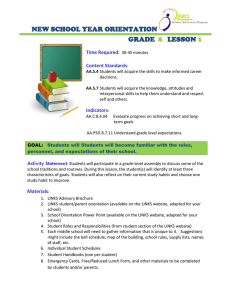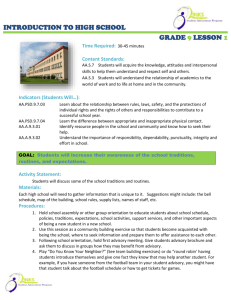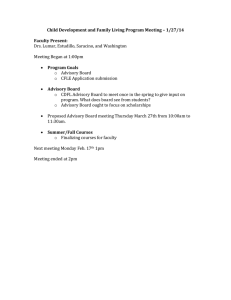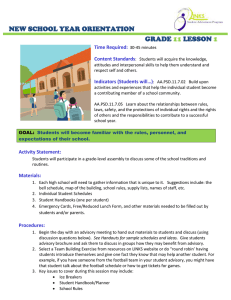NEW SCHOOL YEAR ORIENTATION GRADE LESSON
advertisement
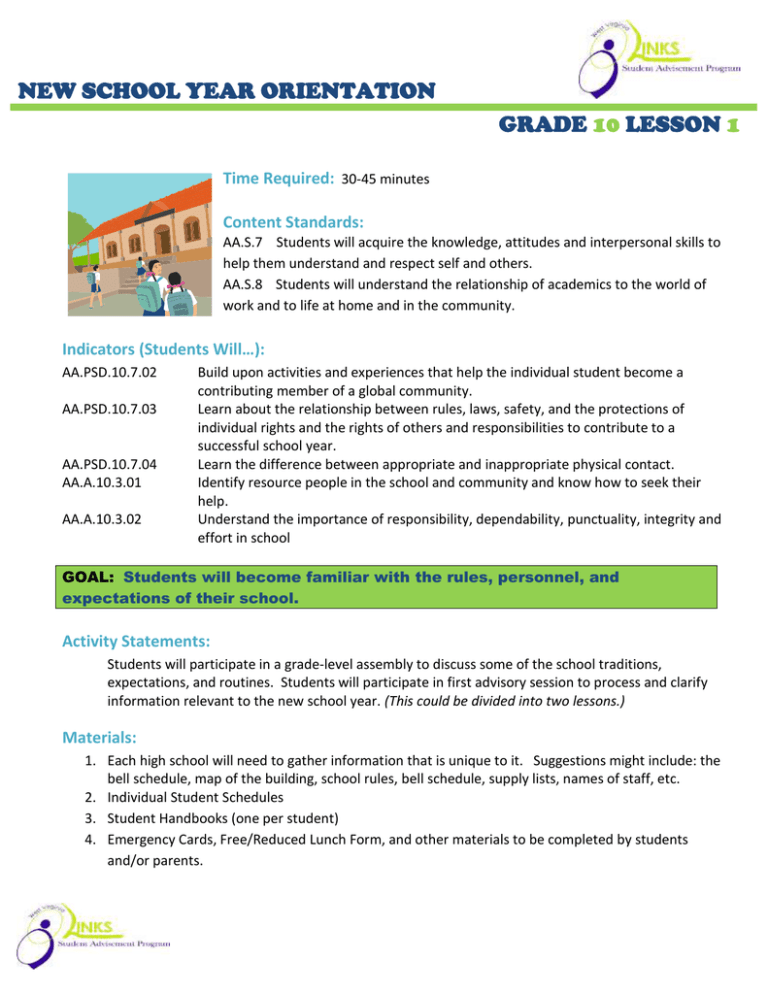
NEW SCHOOL YEAR ORIENTATION GRADE 10 LESSON 1 Time Required: 30-45 minutes Content Standards: AA.S.7 Students will acquire the knowledge, attitudes and interpersonal skills to help them understand and respect self and others. AA.S.8 Students will understand the relationship of academics to the world of work and to life at home and in the community. Indicators (Students Will…): AA.PSD.10.7.02 AA.PSD.10.7.03 AA.PSD.10.7.04 AA.A.10.3.01 AA.A.10.3.02 Build upon activities and experiences that help the individual student become a contributing member of a global community. Learn about the relationship between rules, laws, safety, and the protections of individual rights and the rights of others and responsibilities to contribute to a successful school year. Learn the difference between appropriate and inappropriate physical contact. Identify resource people in the school and community and know how to seek their help. Understand the importance of responsibility, dependability, punctuality, integrity and effort in school GOAL: Students will become familiar with the rules, personnel, and expectations of their school. Activity Statements: Students will participate in a grade-level assembly to discuss some of the school traditions, expectations, and routines. Students will participate in first advisory session to process and clarify information relevant to the new school year. (This could be divided into two lessons.) Materials: 1. Each high school will need to gather information that is unique to it. Suggestions might include: the bell schedule, map of the building, school rules, bell schedule, supply lists, names of staff, etc. 2. Individual Student Schedules 3. Student Handbooks (one per student) 4. Emergency Cards, Free/Reduced Lunch Form, and other materials to be completed by students and/or parents. NEW SCHOOL YEAR ORIENTATION GRADE 10 LESSON 1 Procedures: 1. Begin the day with a school assembly to review school traditions, rules, and expectations. Identify changes that occurred since the new school years including new programs, activities, and schedules. 2. Hold an advisory meeting to hand out materials to students and discuss (using discussion questions below). See Handouts for sample schedules and ideas. 3. Give students advisory brochure and ask them to discuss in groups how they may benefit from advisory. 4. Review advisory ground rules established collaboratively with the previous year’s. If this is the first meeting for this group or if the group has a new leader, it is recommended that the group repeat the process from lesson 9.2 “Setting Ground Rules.” 5. Play “Do You Know Your Neighbor?” (See Team Building Exercises) or do “round robin’ having students introduce themselves and give one fact they know that may help another student. For example, if you have someone from the football team in your student advisory, you might have that student talk about the football schedule or how to get tickets for games. 6. Key issues to cover during this session may include: Ice Breakers Student Handbook/Planner Student Schedules and Change Process School Rules 7. Suggest that students make at least two copies of their schedule so that if they lose one they will have an extra copy. 8. Give students the important school phone numbers (e.g. the main office, counseling office, attendance office, etc.) 9. Identify key people and places including their school counselor, school nurse, and principals. 10. Talk to students about clubs or sports. 11. Have senior mentor available to answers key questions. 12. Following advisory, hold a grade-level assembly to address school rules and regulations, school and community resource personnel, and important character traits of successful students. 13. Use this session as a community-building exercise so that students become reacquainted with being in the school and where to seek information. Also prepare them to offer assistance to each other. Discussion Questions: 1. Review your schedule to make sure it appears the way you think it should. Are all of the classes there that you will need for this quarter? Do you see any errors? 2. Open your handbook and let’s review some of the important items together. (Review items.) Do you notice any changes from last year? 3. In a few moments you will be going to an assembly to receive information about our school. While you are waiting, what questions do you have for me? NEW SCHOOL YEAR ORIENTATION GRADE 10 LESSON 1 Additional Resources: Handout A – “Sample Schedule for First Week of School” Handout B – “Sample Advisory Lessons for Day 1” Handout C – “Checklist for Returned Materials” Extension Activities: Assign returning sophomores as mentors to new sophomores or allow them to self-select. This could be also be done by matching hobbies or career clusters. Do walking tour of building with new students identifying key people and places. Activity: Have students review CFWV.com – specifically their work in their Portfolio
